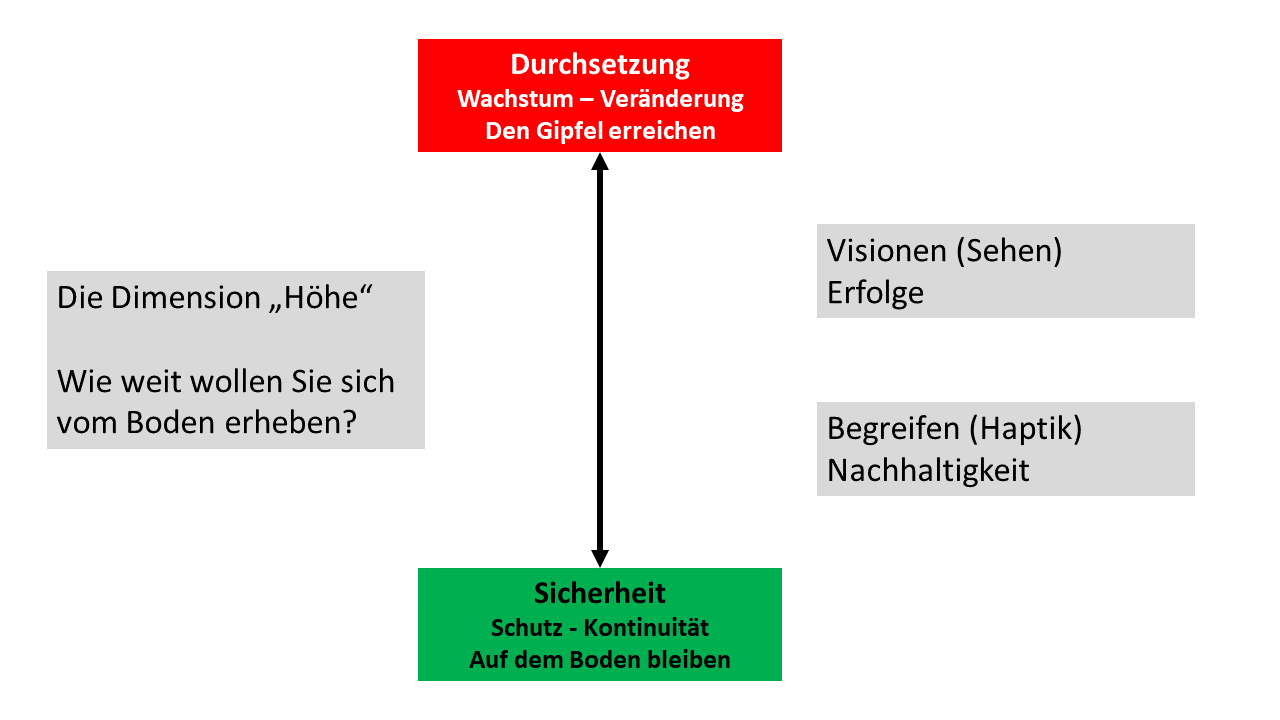Basic needsThe tension of height
On the one hand, there is the need to assert oneself in order to advance one’s ideas, maintain dependencies and ensure progress. On the other hand, there is security, which includes mental, physical and emotional well-being. This field of tension has existed in every human being from an early age. As an infant, it demands food and security. The needs moderate the question of whether it is worth learning to walk. The child is encouraged to gain new experiences and asks itself or its parents whether this is okay. As an adolescent, it pushes them to do things that will go wrong and provides the necessary learning effect for the future. A careful examination of the possible risks takes place and the next step is to weigh up how worthwhile it is to achieve the goal or experience. The adult knows from past experience what is necessary to preserve life and to prevail.
The knowledge is available to achieve assertiveness and security in a wide variety of situations. Intuitively, new things are tried out to satisfy the adventurer or allow stability to flow into a situation in order to be able to act from a strong position in the future. The red need fights for freedom and the green need wants to preserve it. Despite their opposition, they are indispensable components of a personality that need to be kept in harmony. The aim is to create acceptance for both needs. Self-recognition must occur at the right moment as to whether the need for assertion outweighs the need for security. The self must be prepared to find opportunities for itself, take risks and endure occasional negative consequences (self-regulation). The assertiveness part helps to learn from defeats. The safety part helps to preserve victories. The needs cannot reflect which inner goals are to be achieved. This lies in the implicit motives. Does the child want to learn to run in order to conquer, to belong or to develop their performance?

